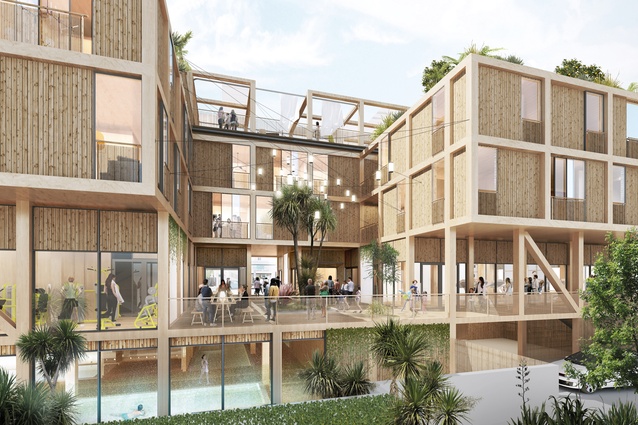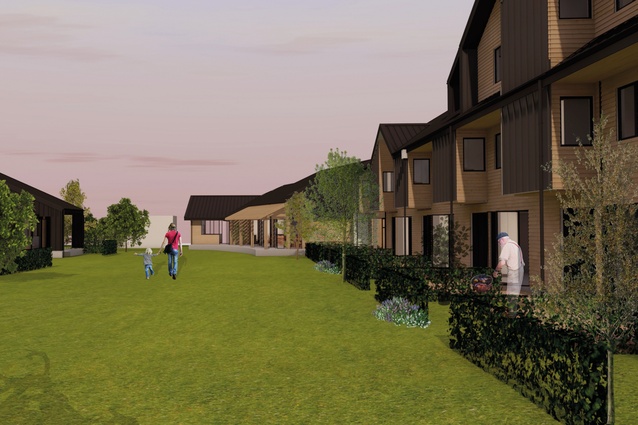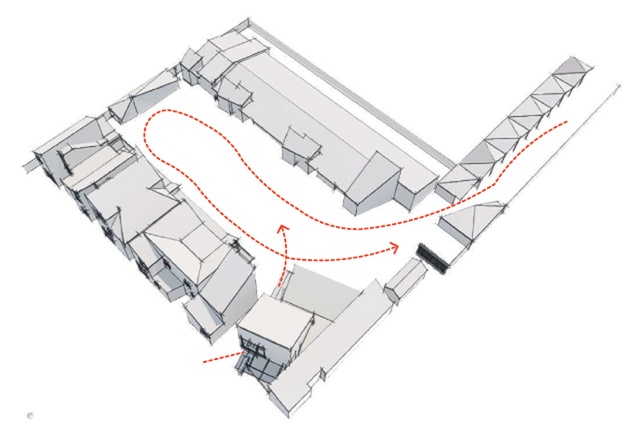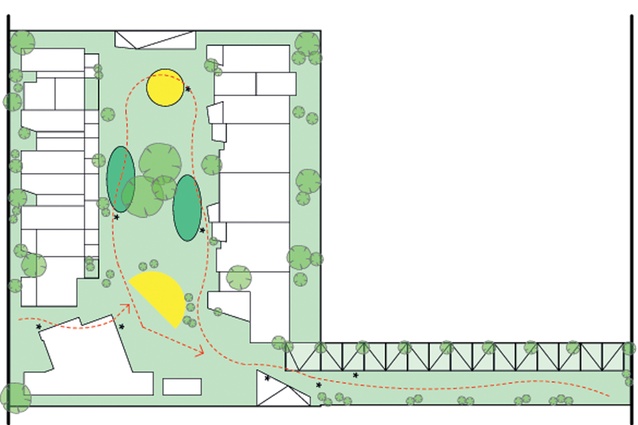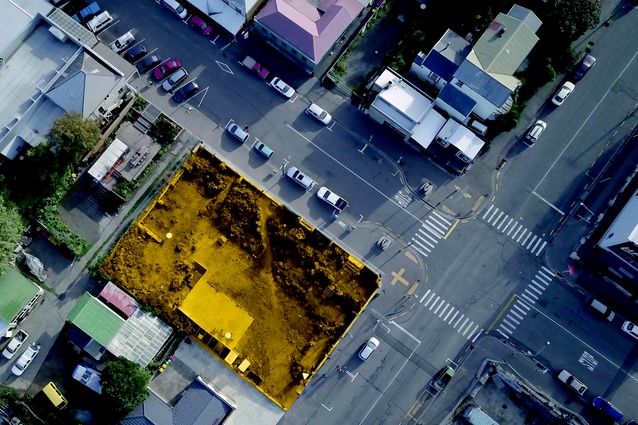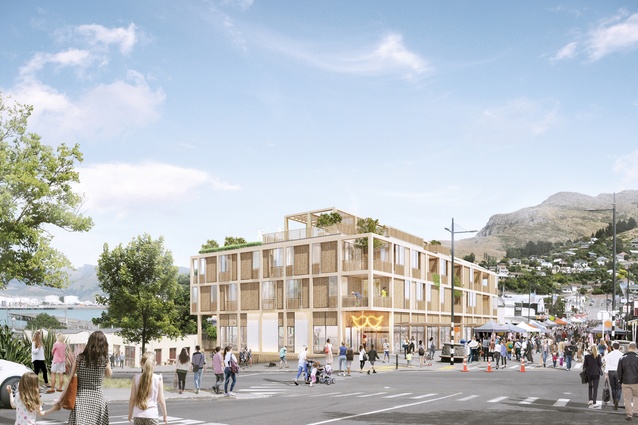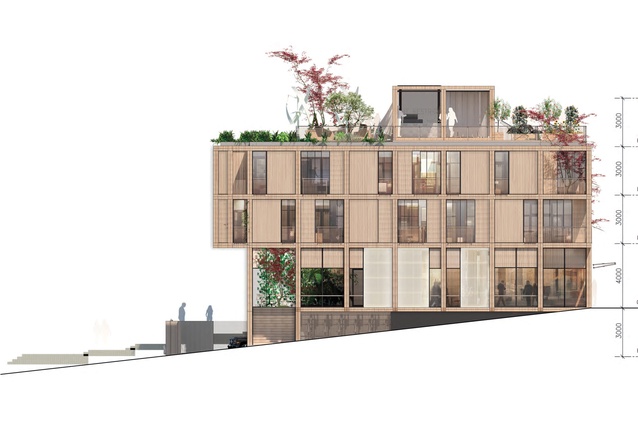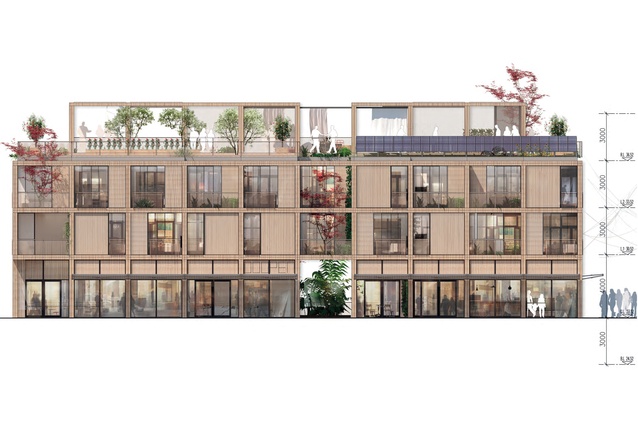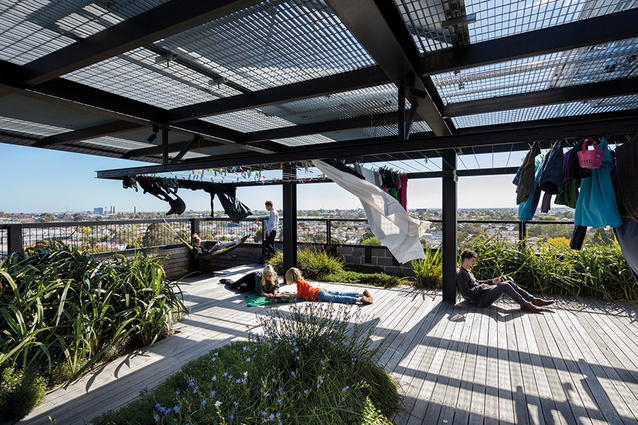Co-what?: Alternative housing models
You may have heard the term ‘co-housing’ bandied about lately, along with ‘co-living’ and ‘cooperative housing’. Abigail Hurst examines these hot words that need to be taken seriously so that, together, the industry can tackle issues like New Zealand’s housing crisis.
No longer just left standing on the edge of the field but rising stars – or threats to the way in which we understand property ownership – are the various emerging forms of co-housing. Co-housing presents solutions that reach across boundary lines and build physical spaces, fostering meaningful relationships.
Co-housing says New Zealand does not need more drawings for individual futures but weavers to create proposals for more interdependence. So, why have we not picked up our knitting needles already?
One of the first co-housing developments was built in 1972 outside Copenhagen, Denmark. Twenty-seven families, frustrated by the available housing options, united to create their own neighbourhood, living in separate houses but owning the land collectively.1 This community is still thriving, with extensive shared facilities – a common house with a large kitchen and dining area, gardens and play areas – continuing to create interactions that knit the community together.
Originally named ‘bofællesskab’, meaning ‘living community’, the idea was coined ‘co-housing’ when it was introduced to the United States.2 Co-housing developments have been built throughout North America and Europe, as well as in Australasia. Earthsong, our first completed, purpose-built, co-housing development, was founded by a group of motivated individuals in 1995.3
Communal living is nothing new; it is part of our human history. Before individual land ownership, our civilisations lived together in arrangements not unlike co-housing. Māori commonly lived in whānau-based kāinga: extended families living together with a variety of shared building types. Other intentional communities, such as housing cooperatives in the United Kingdom by the Rochdale Pioneers in 1861, or kibbutzim in Israel in the early 1900s, exist and their outcomes may look similar.
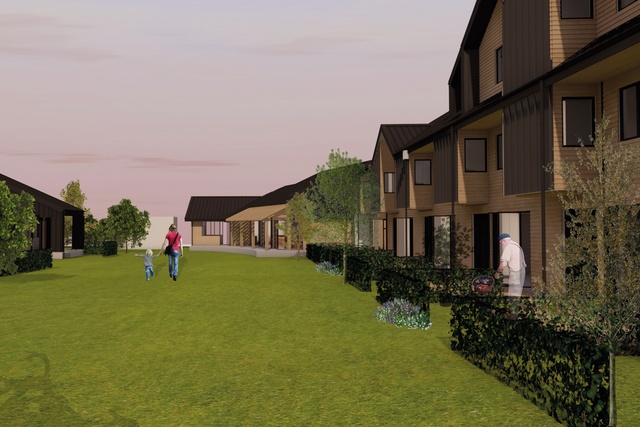
Cooperative housing, linked to these movements, has been built in New Zealand since the 1970s. In the early 1980s, recommendations were made to our government to support these endeavours4 but resulted in little action – the ventures largely failed, though remnants still stand today in various parts of the country.5 The co-housing movement, however, is identified as separate from this and is, primarily, a conscious reaction to 20th-century living.6
Similar challenges face us today, with changing demographics, the disproportionate cost of property relative to income, a need to care for the environment and a desire for actual community (not just the online variety). Co-housing could shift us back to the roots of our social structures, where the larger family lived communally and generations looked after one another on a more involved basis.
Co-housing is a flexible concept that wrestles with any definition. Examples can be found in urban city centres as well as in rural areas. It is not strictly residential either and, sometimes, includes commercial enterprises. However, it can generally be recognised by a participatory design process, extensive common facilities, separate income sources and a non-hierarchical resident management structure.7
Traditionally facilitating regular shared meals and rostered property-maintenance duties, co-housing affronts living the way we know it. These activities foster relationships and are what help the communities to function. Engaging with people is required on a more involved, frequent level than is the case in our typical suburban set-up.
These characteristics seem inclusive and fair; still, there is something that makes us feel uncomfortable. There is the ring of an ideology that sounds too utopian and concerns about personality conflicts and issues of privacy lurk. Co-housing dwellers acknowledge that “conflict is integral to living in the community”8 but, to them, it is worth it.
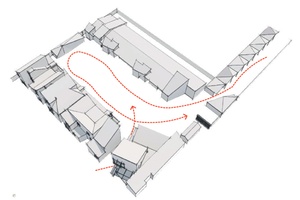
It is the opportunity to live more closely with others: to listen and learn. It offers a new way of housing out of a desire for a more practical, economical and social living environment, without isolation from its context. This is not about people seeking to live separately from the rest of society but about a group of people cooperating with one another to live better within their neighbourhood.
The Peterborough Housing Co-operative (the Co-op), located on Peterborough Street in central Christchurch, is doing just that. It began in 1980 when a large inner-city property, consisting of six individual houses, became available. Families rented the houses on trust-owned land, forming a community until the destruction caused by the Canterbury earthquakes.
A core group of people has remained and worked together since to rebuild the community. Allfrey + South Architects was engaged by the Co-op in 2016 for the design of a neighbourhood. The new development, now under construction, will be bigger, with 14 units, a shared laundry, a common house, grounds and a photovoltaic power network subsidising the collective power bill.
The original six houses (now demolished) were at times ill-fit, especially in winter when each one was too small for gathering inside together. The new houses will face each other as two rows with shared ground between. Strategic placement of the common house (including generous kitchen and dining spaces) at one end of the site and a shared laundry room at the other will create further opportunities for social interaction.
Increasing these opportunities for human connection is what co-housing seeks to do. However, having the right amount of private space is just as critical, in order to create balance. For this reason, Allfrey + South Architects designed each housing unit to have private outside space.
Within, the kitchen faces the porch and acts as mediator between the more public realm and the private living room. This arrangement encourages socialising but does not make it mandatory. Another key move made by the Co-op is to push the car parks to the site’s edge. This makes for safer spaces between the buildings and for more land to be available for other uses and, again, increases the chances of meeting others in everyday life.
Collett’s Corner, located on a prominent corner site in Christchurch’s Lyttelton, is a development also putting human connection first. The proposal did not begin with “let’s do co-housing”; it started with “what are the needs of Lyttelton?”
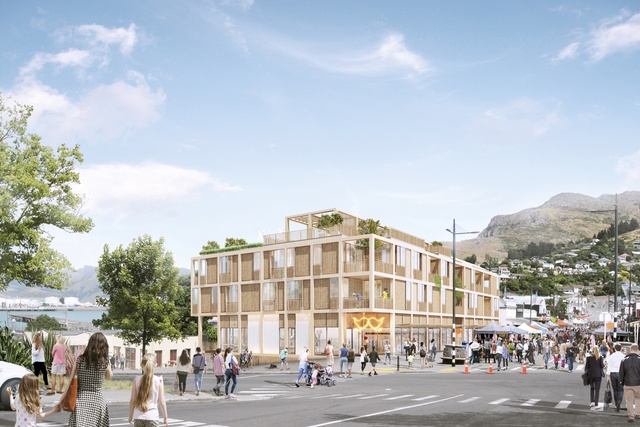
A two-year consultation process has led to a four-storeyed (plus roof terrace) proposal that includes both residential and commercial spaces – a restaurant, retail, a wellness centre, a gym and an open courtyard on the lower two levels, and residential on the upper storeys. Led by Ohu (Office for Holistic Urbanism), an entity that describes itself as a property development group “putting people and communities at the heart of development”, the project has now completed a crowd-funding round and is beginning its developed design phase. The intention is that it will be built by 2021.
Although the residential component of Collett’s Corner could be called ‘co-housing’, it is probably more apt to call it ‘co-living’. With so many models of collaborative living emerging, we need to be more precise with our language and invent and agree on new terms as an industry.
Camia Young, former American architect and founder of the Christchurch-based company Ohu, says it is useful to think about a spectrum between suburbia (non-shared) and co-housing (shared). Young describes co-living as a gentle middle-ground in-between. While there are more opportunities for meeting people, there is no requirement to be living in community. A co-living arrangement typically does not propose dinner rosters but takes the form of apartment-style living with shared amenities.
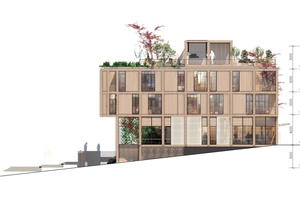
This is what another Christchurch project, the Madras Square neighbourhood by the Ōtautahi Urban Guild (a joint venture being led by Ohu), hopes to deliver. A key driver for the Guild is to provide affordable housing within the city, aiming to offer homes at 10–20 per cent below market rates. Guild spokesperson James Stewart says this can be achieved through the sharing of consultant costs, no added profit margins and options for shared facilities.
Other amenities are presented but not obligatory and can be included in the price (or not), enabling people to prioritise their space and money. Co-working spaces, shared car and bike schemes, and sustainable power generation are also possibilities that could allow people better access to living more sustainably.
When more people choose to buy into these, co-owned spaces make up a larger footprint of the development, also increasing the economic viability. This model relies on detailed and direct discussions with interested people at the feasibility stage. The Guild is currently engaging with a community of prospective buyers and design workshops will soon take place.
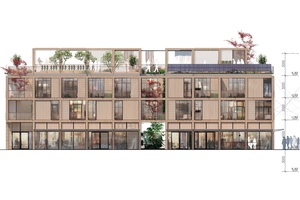
Madras Square, proposed on a site of 8,000m2 on the corner of Madras and Gloucester Streets, has the potential not only to deliver affordable housing but also to regenerate inner-city Christchurch. The proposal to introduce about 150 housing units (developed around groups of 40 people to fit within the optimum scale of community) would give a lively, round-the-clock dynamic to a city that has largely failed at more than a 9–5 city culture.
This is the site of the failed Breathe Urban Village project where, after a competition in 2013, no project went ahead because none was financially viabile. It is hoped that this non-traditional strategy will have a competitive edge to excite people about living in community, in the city. If it succeeds, it will not only be a win for the site and for Christchurch but, also, for the country.
Who, you may ask, is buying into these collaborative housing models? Primarily, says Young, people who are suffering from the housing crisis. Secondly, there is a generation that is growing older and does not want to live in retirement villages on the city fringes. These people want to continue to live in their own investments, with additional shared facilities for which they don’t have to be solely responsible. There is also a third group signing up because they are genuinely interested in understanding what it means to live intimately as a society: to create sustainable behaviours where there is mutual support. Collaborative living could be an answer to the world’s imbalance of wealth, collectively generating social and financial returns to bring equality.
This may sound like an economic, social experiment bound for either greatness or disaster, if one too many stitches are dropped. However, just across the ditch are examples of similar developments that are working. Nightingale Housing has created a replicable model for housing provision in Australia, with a completed project located in Brunswick, Melbourne, and more are under way.
One of these is Nightingale Village, also located in Brunswick: a precinct that will bring seven communities, seven apartment blocks and seven different architects within one master plan, realising co-housing at a village-sized scale. Its impact will pivot the Australian property market, albeit slowly.
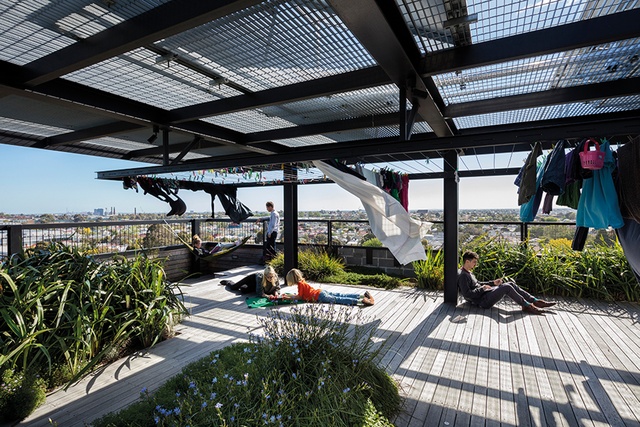
Nightingale has no real estate agents but its residential properties are being bought so quickly there is a waiting list. Furthermore, Nightingale does not pay GST because there is no technical ‘sale’ of the properties, only a managed process of the not-for-profit developer collaborating with people needing houses. No sales revenue so no GST – a cost saving reflected in the below-market sales prices. Paying attention yet?
Not only does our vocabulary for these strategies of housing need to play catch-up but our country’s financial, legal and regulatory models do as well. There are ways to create co-housing (and co-living) developments but it is a tricky and costly navigation. At the small-scale end of co-housing, friend groups are finding the way forward can be met with lengthy and expensive consultant meetings, resulting in compromised designs shoehorned to fit existing rules.
The good news is that developers like Ohu have pooled resources to break ground that should eventually lead to more transparent, smooth processes, with any luck changing stiff legal and value definitions in their wake. Terms of sale, restrictive covenants and body corporates are mechanisms that need to be altered carefully to work for, not against, co-housing.
Co-housing will not be for everyone but it is worth questioning whether our existing arrangements of ownership and living are the best. Are we just living and designing what we already know because it is easier? Are we going to engage with this collaborative housing concept with a steely exterior or with open arms? If architecture is not just a question of shelter but one of human endeavour, our architectural profession must participate in co-housing and learn what solutions it can provide in our context.
Solutions for the housing crisis are mostly at a stalemate, with not even KiwiBuild meeting its targets, and co-housing could be a game-changer. If the government is too slow to listen, Nightingale and Ohu are showing that it’s possible to take over the role of developer and work nimbly within the current constraints.
Collaborative housing has enough merit to deserve architect-led developments. It needs architectural input to help solve its many complex social, legal, financial and design challenges. If society is our tapestry and the built environment its framework, perhaps co-housing is a new stitch that architects can use to knit our rich diversity together.
This article first appeared in Architecture New Zealand magazine.

1 McCamant, Kathryn, and Charles Durrett (1994) Cohousing. 3rd ed. Canada: New Society Publishers.
2 Ibid.
3 Cohousing New Zealand, “Earthsong Eco-Neighbourhood”, cohousing.org.nz/communities/earthsong-eco-neighbour-hood
4 Gray, Alison, and Judith A. Davey (1983) Prospects for Co-Operative Housing in New Zealand. Wellington: National Housing Commission.
5 Converge, “Ohu: Utopias in a Paradise Lost?” converge.org.nz/evcnz/resources/ohu.html
6 Cohousing New Zealand, “Earthsong Eco-Neighbourhood”.
7 McCamant, Kathryn, and Charles Durrett (1994) Cohousing.
8 Pole, Steph and Jim Small (Peterborough Housing Co-operative residents and trustees), interviewed in person by Abigail Hurst at Allfrey + South Architects, 195 Peterborough St, Christchurch, 26 February 2019.

